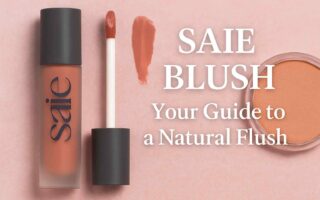There’s nothing quite like the feeling of freshly pampered feet. Whether you’re slipping into your favorite sandals or just want to unwind after a long week, a good pedicure is one of the most satisfying self-care rituals. But pedicures are more than just a beauty indulgence. They are a vital part of foot care that can boost confidence, improve hygiene, and even support overall well-being.
In this article, we’ll explore everything you need to know about pedicures from the benefits and step-by-step processes to tips on choosing the right products and salon treatments. You’ll walk away with expert insights that not only keep your feet looking fabulous but also feeling their absolute best.
What Exactly Is a Pedicure?
A pedicure is a cosmetic treatment for the feet and toenails that typically includes soaking, exfoliating, nail shaping, cuticle care, moisturizing, and often polish application. It can be performed at home or in a salon. Pedicures help remove dead skin, prevent nail disorders, and improve circulation.
Health Benefits of a Pedicure
Improved Circulation
The massage component of a pedicure enhances blood flow to the feet and legs, reducing stiffness and promoting relaxation.
Early Detection of Foot Issues
Regular pedicures can help identify corns, bunions, or fungal infections early before they become serious.
Skin and Nail Health
By removing dead skin cells and moisturizing the feet, pedicures prevent cracked heels, calluses, and ingrown toenails.
At-Home Pedicure: Step-by-Step Guide
1. Prepare Your Tools
You’ll need a basin for soaking, a pumice stone or foot file, nail clippers, cuticle pusher, nail buffer, moisturizing lotion, and polish if desired.
2. Soak Your Feet
Fill the basin with warm water and add Epsom salt or essential oils. Soak your feet for 10–15 minutes to soften the skin.
3. Exfoliate and File
Use a pumice stone to scrub away dead skin, focusing on the heels and balls of your feet. Gently pat dry afterward.
4. Nail and Cuticle Care
Trim your toenails straight across and file the edges. Push back the cuticles carefully using a wooden stick or cuticle pusher.
5. Moisturize Deeply
Apply a rich foot cream or coconut oil and massage it in circular motions for at least five minutes per foot.
6. Polish for a Finishing Touch (Optional)
Apply a base coat, two coats of color, and a top coat if you wish to paint your nails. Let each layer dry completely.
Choosing the Right Salon for a Pedicure
Hygiene Is Key
Ensure the salon sterilizes its tools and uses clean foot baths to prevent infections.
Check the Products
A reputable salon uses high-quality lotions, scrubs, and nail polishes. Don’t hesitate to ask about the brands they use.
Read Reviews
Online reviews and word-of-mouth referrals can guide you to a trusted technician who treats your feet with care and expertise.
Types of Pedicures to Try
Classic Pedicure
Includes soaking, exfoliation, nail shaping, and polish application.
Spa Pedicure
Adds luxurious extras like masks, hot towels, and aromatherapy oils.
Gel Pedicure
Uses gel-based polish cured under UV light for a longer-lasting finish.
Paraffin Pedicure
Incorporates a warm wax treatment that deeply moisturizes dry skin.
Expert Tips for Long-Lasting Results
Don’t Skip the Base Coat
It protects nails from staining and improves polish adhesion.
Hydrate Daily
Moisturize your feet every night to keep them soft and crack-free.
Use Foot Masks Weekly
These are great for deep hydration and skin renewal.
Wear Breathable Footwear
Shoes made from natural materials reduce sweating and odor.
Schedule Regular Touch-Ups
Even at home, maintaining nail shape and cuticle health keeps feet looking fresh.
Must-Have Products for Your Pedicure Kit
- Foot Soak: Try lavender or tea tree for relaxation and antimicrobial benefits.
- Exfoliating Scrub: Sugar-based scrubs are gentle and effective.
- Cuticle Oil: Nourishes and softens the cuticle area.
- Nail Strengthener: Protects against breakage and splits.
- Quick-Dry Spray or Drops: Speeds up drying time.
When to Avoid a Pedicure
- Infections or Open Wounds: Wait until healed to prevent spreading bacteria.
- Fungal Nail Conditions: These should be treated by a professional before any cosmetic pedicure.
- Severe Diabetes or Circulation Issues: Always consult a podiatrist before receiving any foot treatment.
Final Thoughts
A well-done pedicure goes beyond appearance. It’s a form of self-care that supports your health, confidence, and overall wellness. Whether you’re indulging in a luxurious spa treatment or giving yourself a pampering session at home, maintaining your feet should be a priority in your beauty routine.
Take a moment to treat yourself—your feet deserve it! If you have any personal tips or favorite pedicure products, share them in the comments below. Let’s keep the beauty conversation going!
FAQs
1. How often should I get a pedicure? Every 4–6 weeks is ideal to maintain foot health and appearance.
2. Can men get pedicures too? Absolutely. Pedicures are for everyone, and many men enjoy the health benefits and relaxation they provide.
3. Are gel pedicures safe? Yes, if done correctly and not too frequently. Use SPF on your feet before UV exposure during curing.
4. Is it okay to get a pedicure during pregnancy? Yes, but ensure proper ventilation in the salon and avoid massages on pressure points around the ankles.
5. What causes yellow toenails after a pedicure? Often it’s due to prolonged use of dark polish without a base coat. Give your nails a breather and moisturize regularly.



